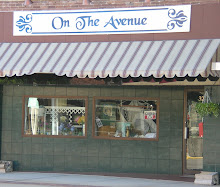
There are two main types of rolling pins - rod and roller. The rod, usually of wood, is the long, thin, handle-less, often tapered cylinder preferred by French chefs, while the roller - more popular in the States - consists of a cylinder that rolls independently of the handles at each end. Though most commonly of wood, rollers have also been made of such materials as glass, marble, Bakelite, metals, plastic, and silicone.
Of course, the rarer an object, the more valuable it is to collectors, and the same rule holds true with the lowly rolling pin. Yellow Ware pins from the 19th and early 20th centuries have sold for up to $1200. (Yellow Ware derives its name from the tinted clays from which it is made.) Knowledgeable collectors are also on the lookout for such types as the old, heavy stoneware pins with advertising under the glaze on the roller. Harker decorated ceramic pins, authentic Shaker double rolling pins, and Depression-glass pins. These all can sell for from several hundred dollars up to $1000 or more for particularly fine examples.
Harker Pottery, a 19th century Ohio company, manufactured both decorative-patterned and hollow pins. The latter could be filled with ice water to keep pastry cool, a prerequisite for tenderness. Today, Harker pins are beloved of collectors and cooks. Other American pin-makers, characteristically entrepreneurial, sold advertising space on ceramic models that were offered as giveaways. Flour mills were the usual advertisers, and yet promotional rolling pins were curiously popular with undertakers.
Glass rolling pins were actually used in early Victorian kitchens. Depression glass rolling pins were made during the 1930s and 1940s in an assortment of colors. Today collectors will find these glass collectibles cost hundreds of dollars. Elaborate, hollow, blown glass rolling pins in clear emerald green, cobalt blue, and milk glass bore enameled decorations and inscriptions. Their nautical embellishments and mottoes hint that they were probably gifts from sailors. Most of these were English.

Here's an interesting use for the rolling pin: “How to Improve the Appearance: Making the Neck Pretty” from the American Woman Magazine, October 1920.


No comments:
Post a Comment